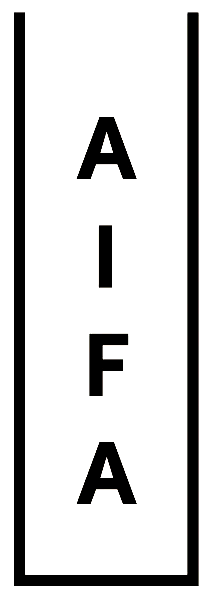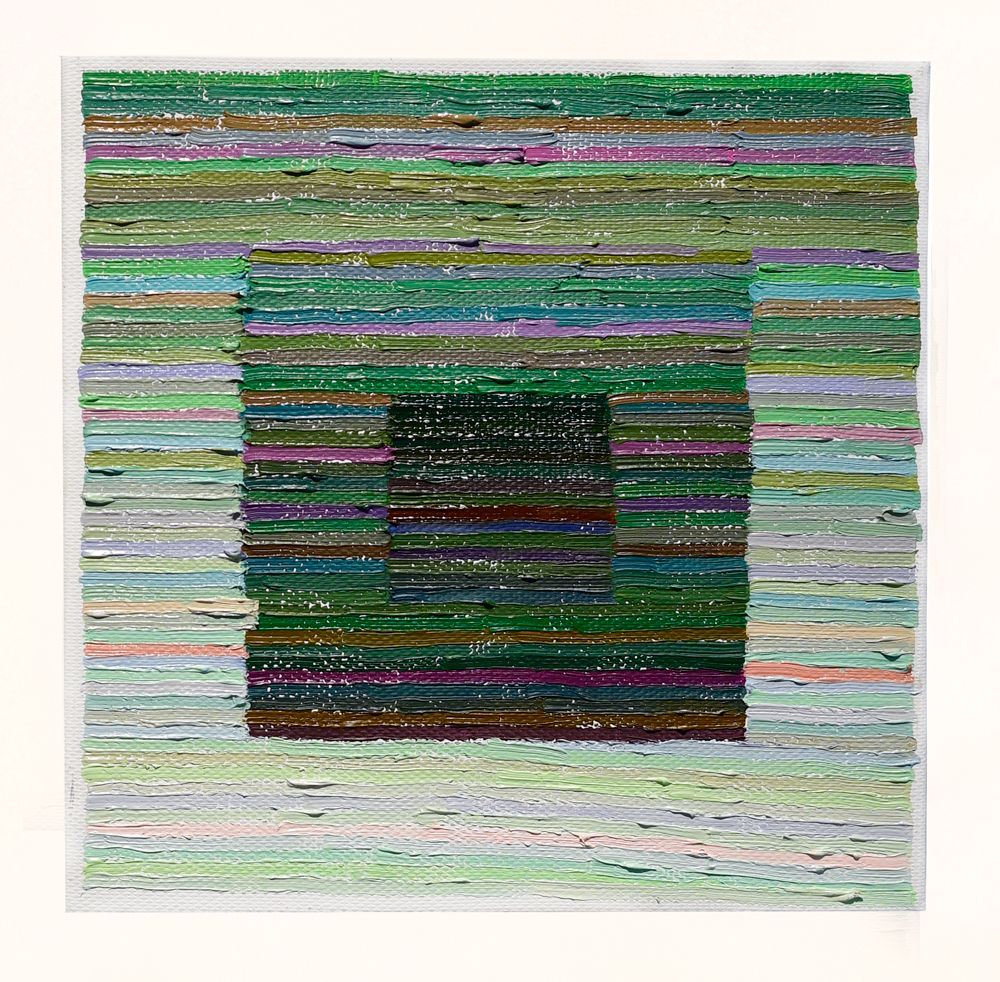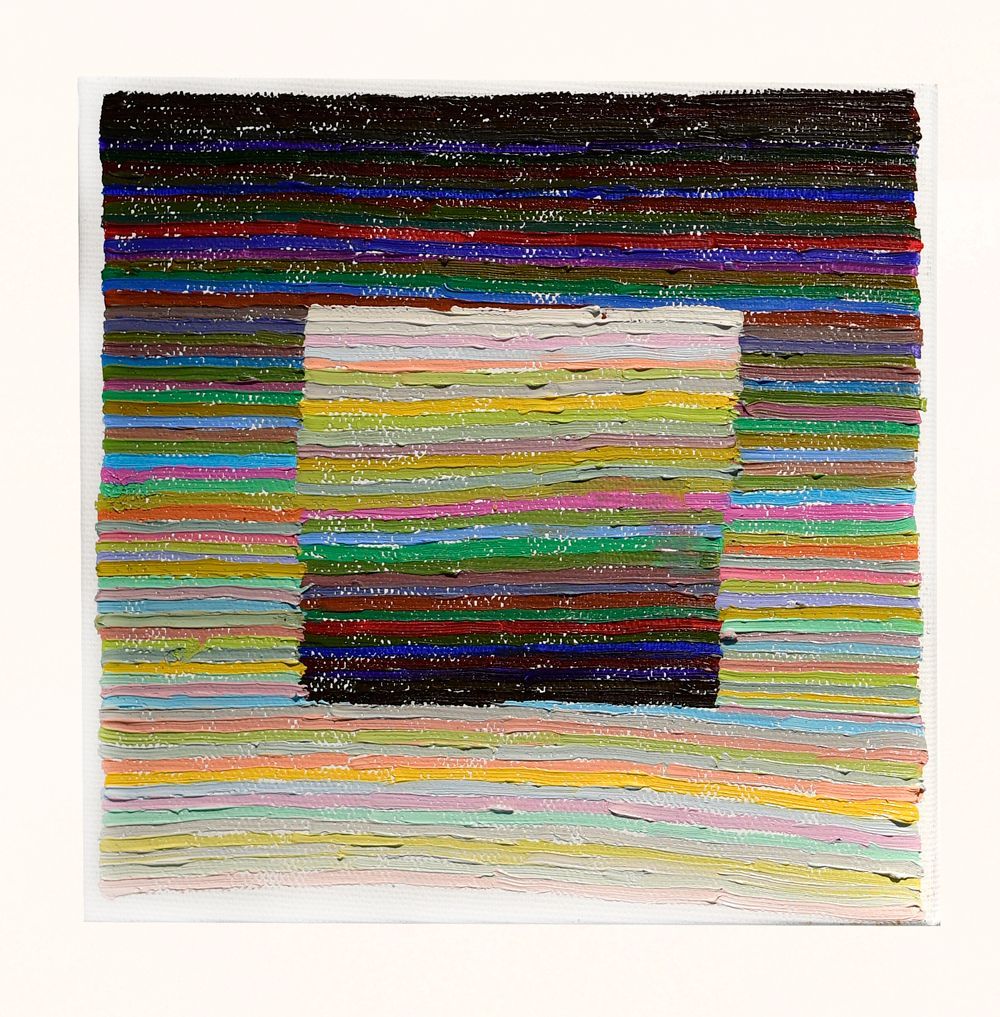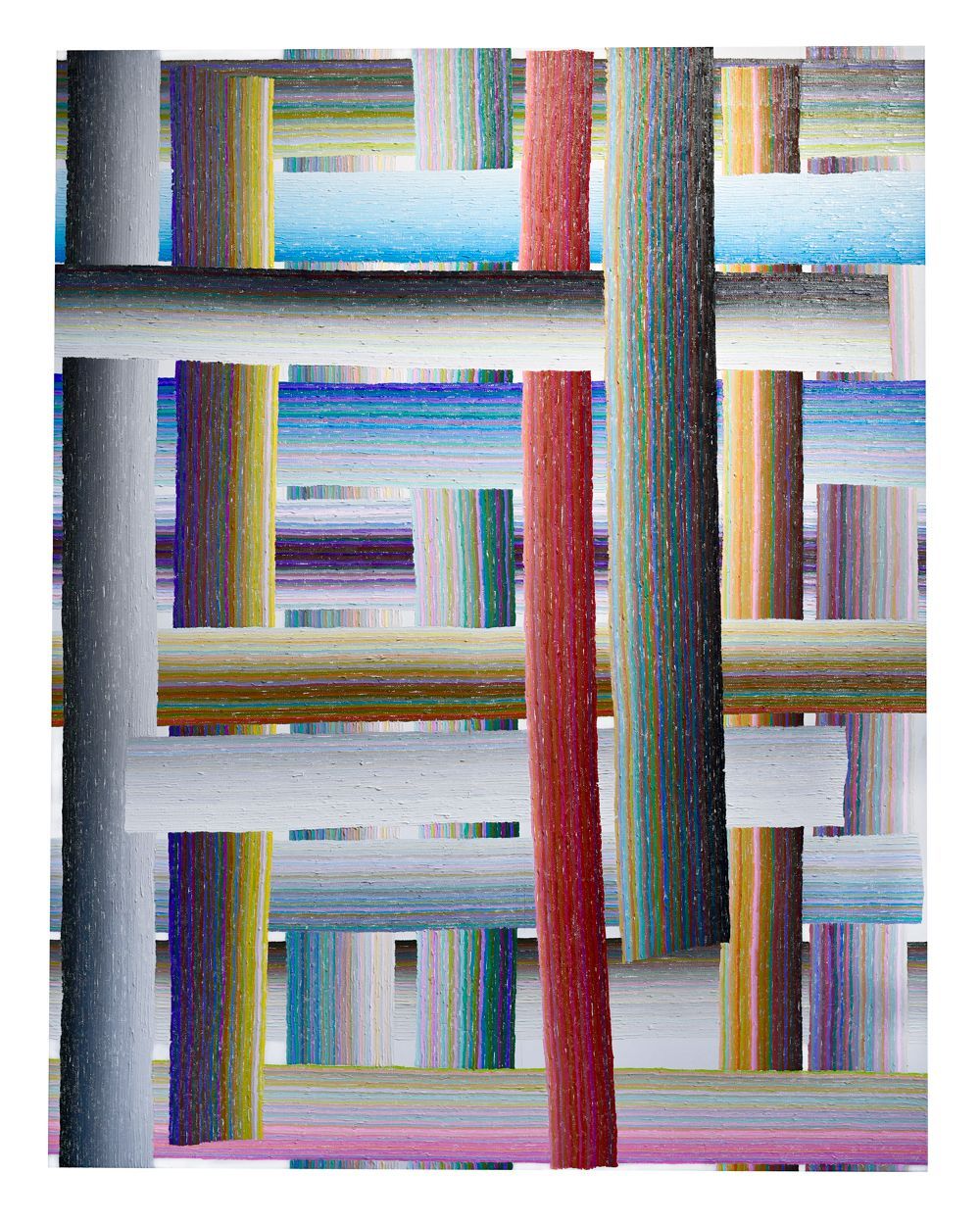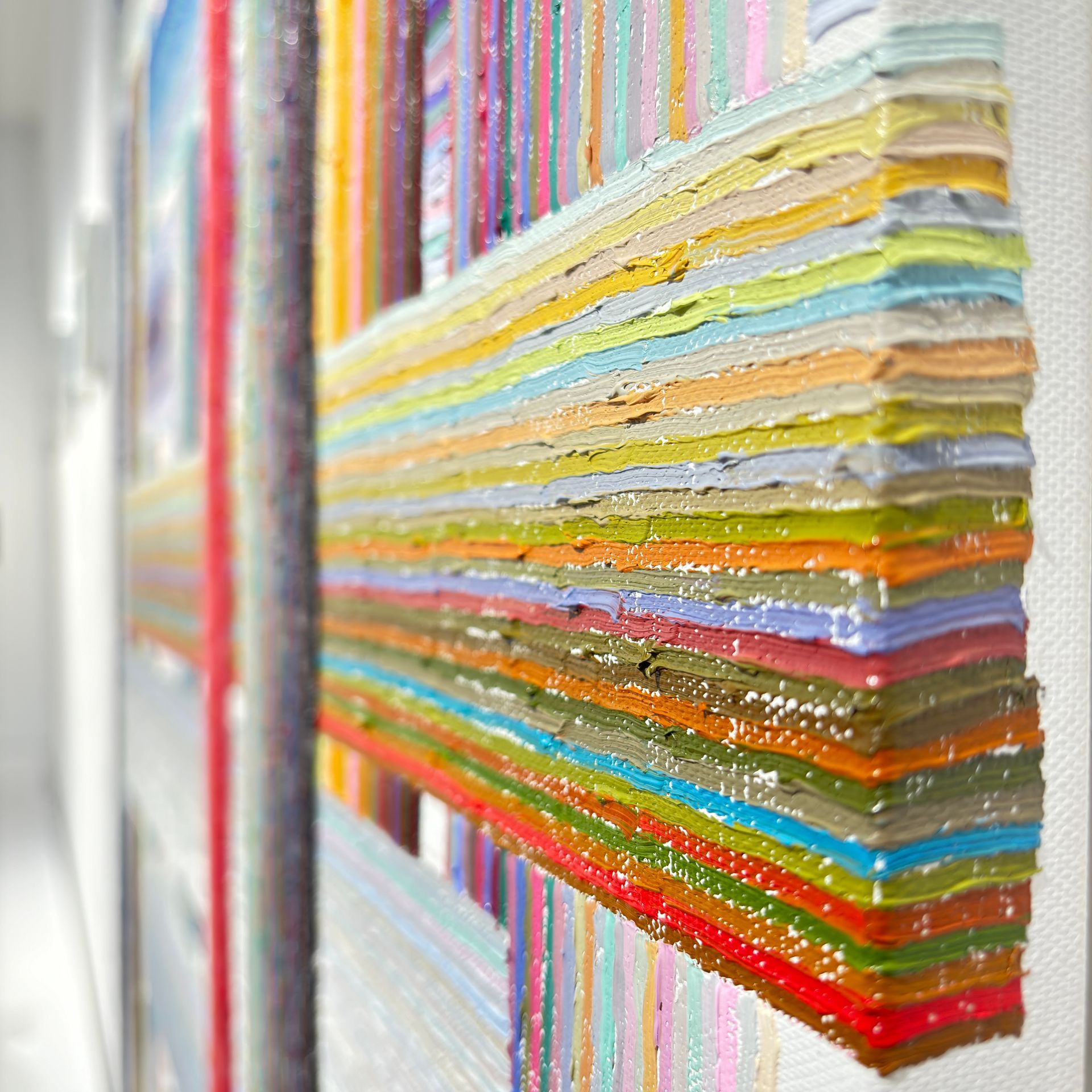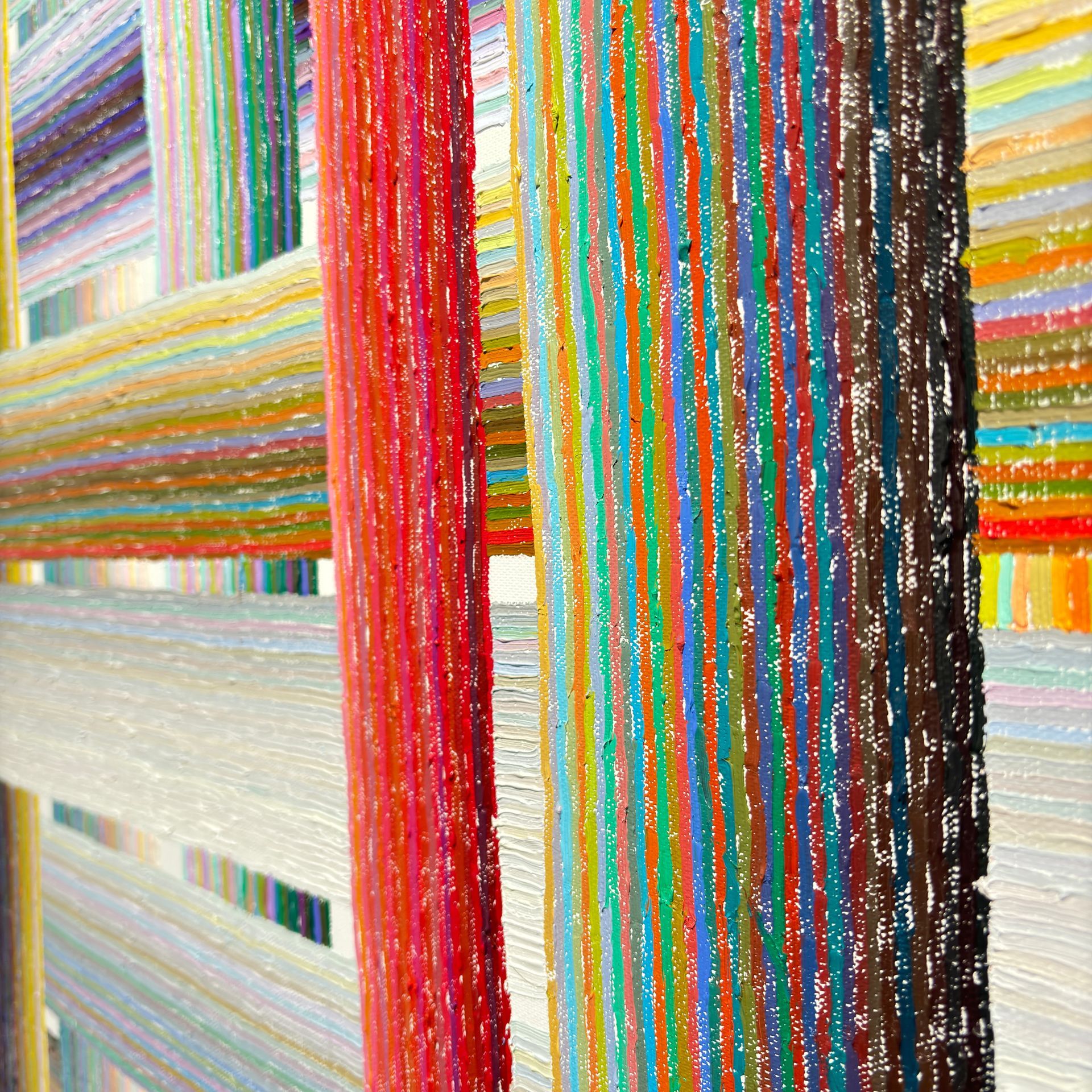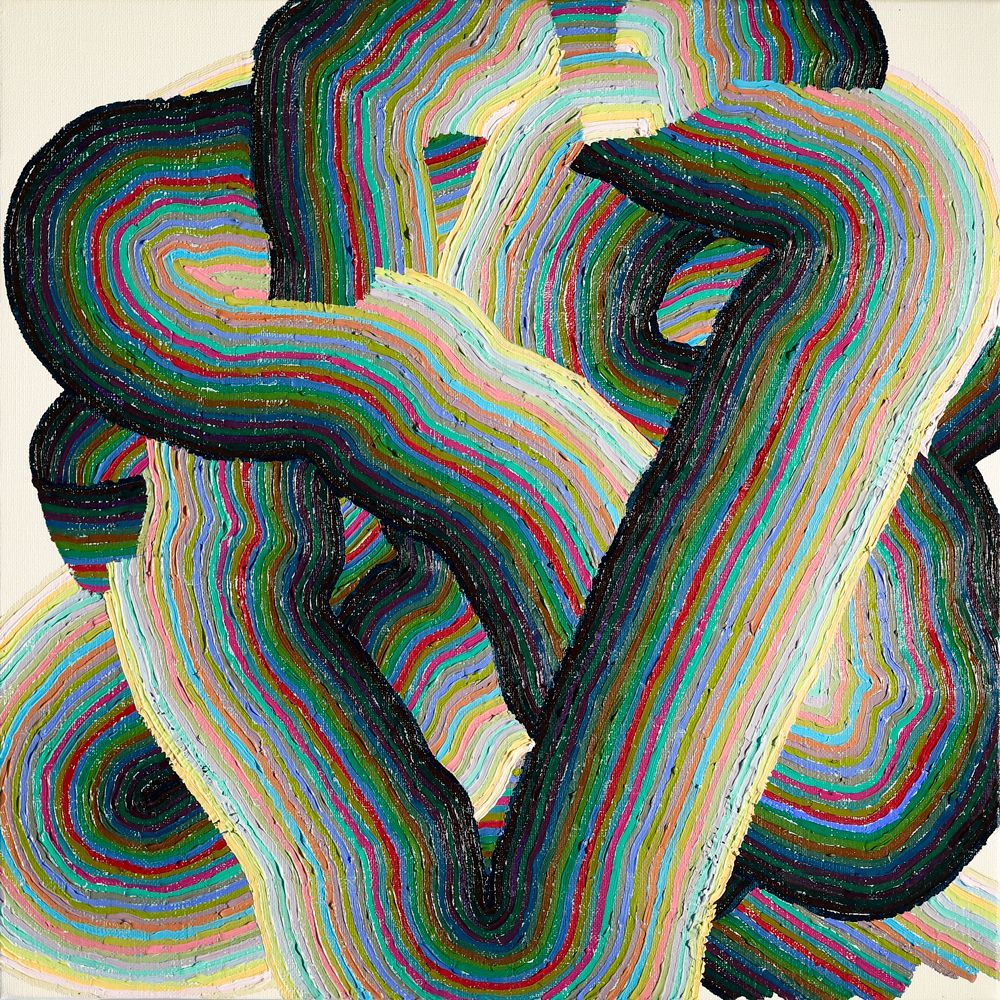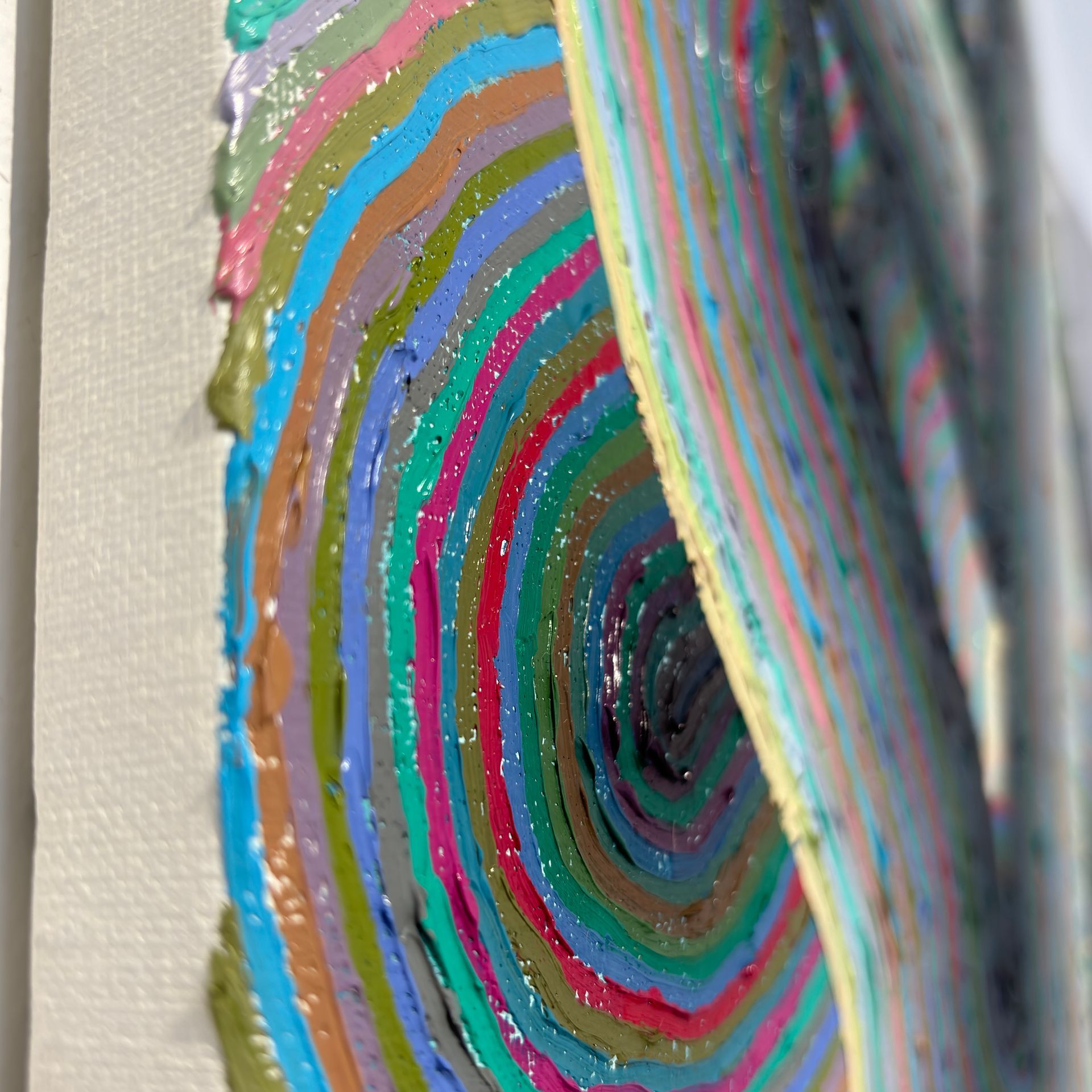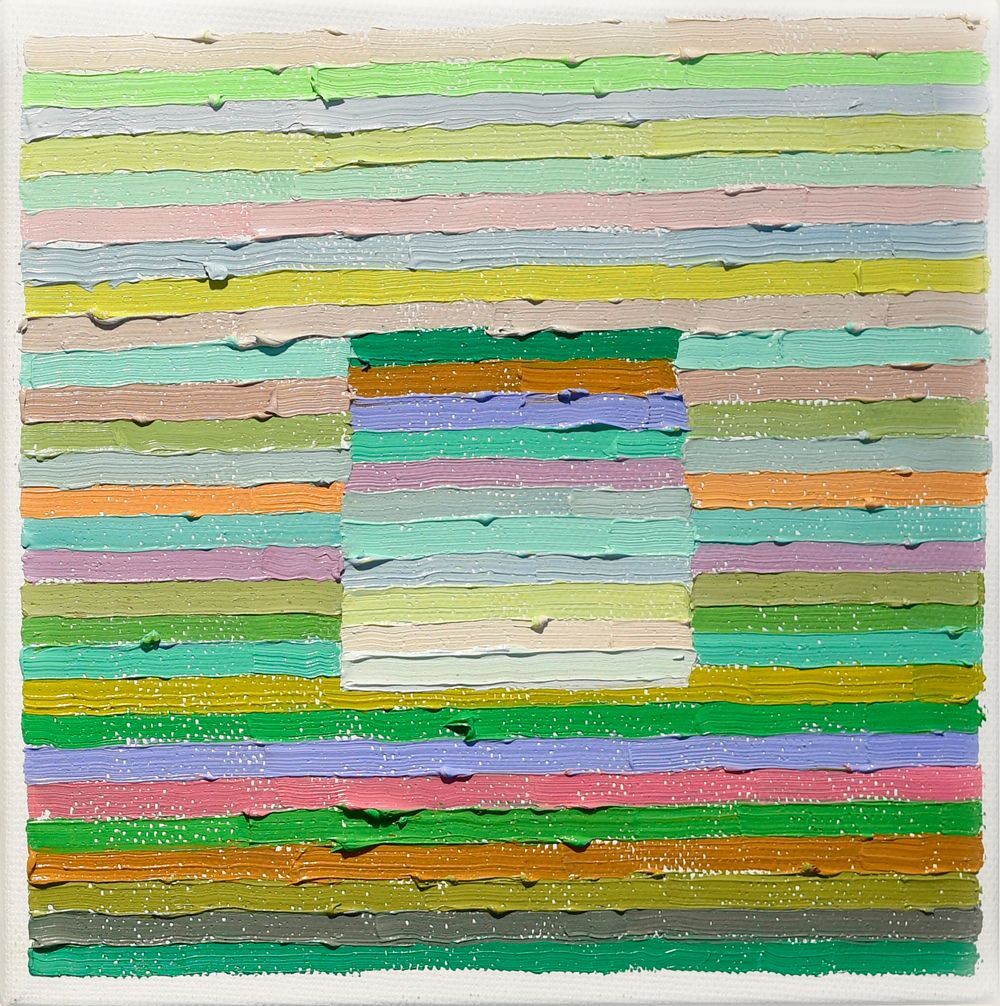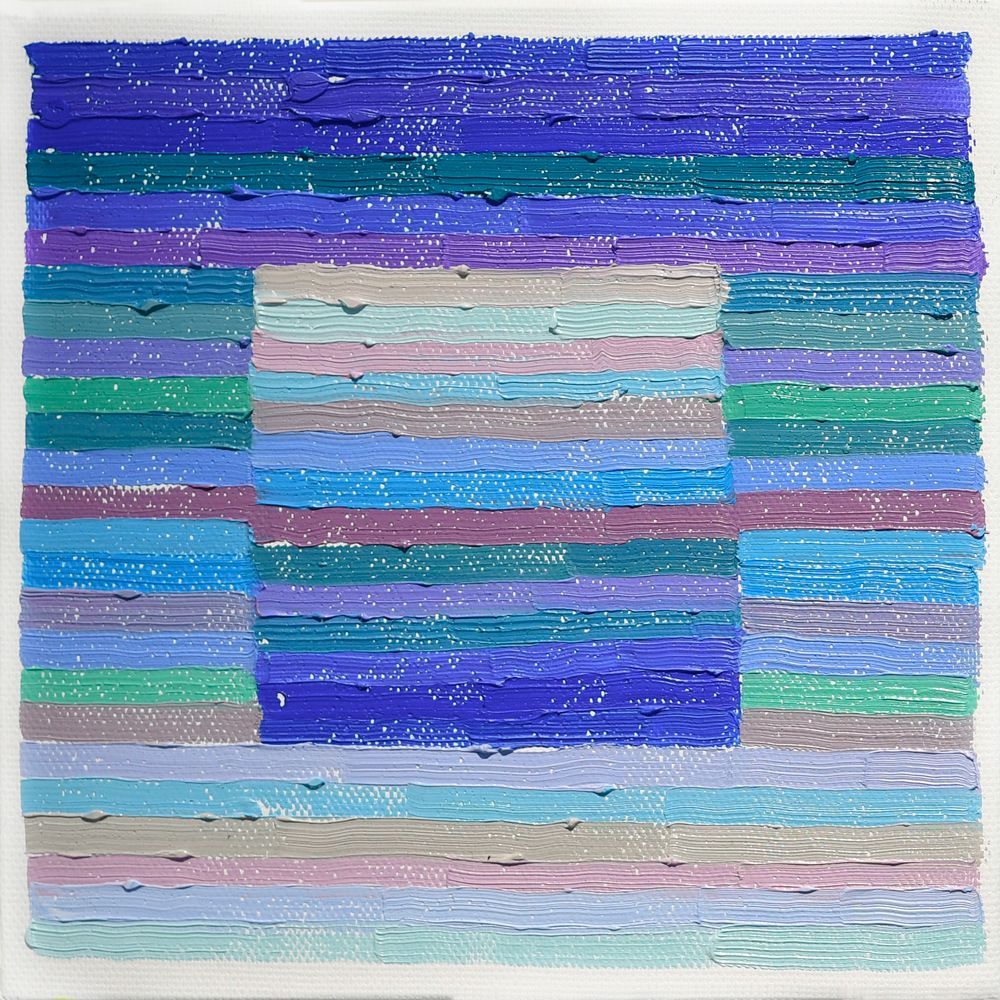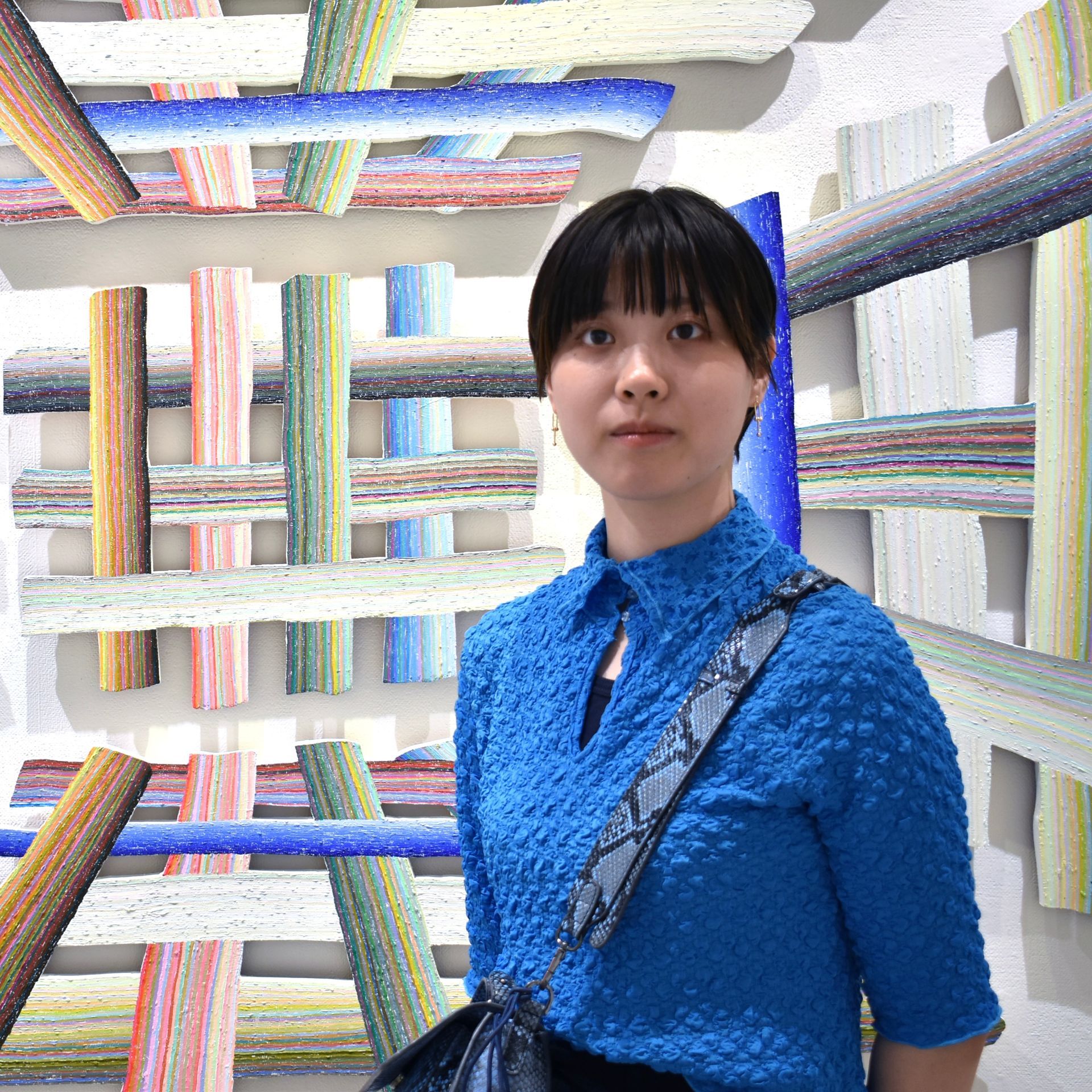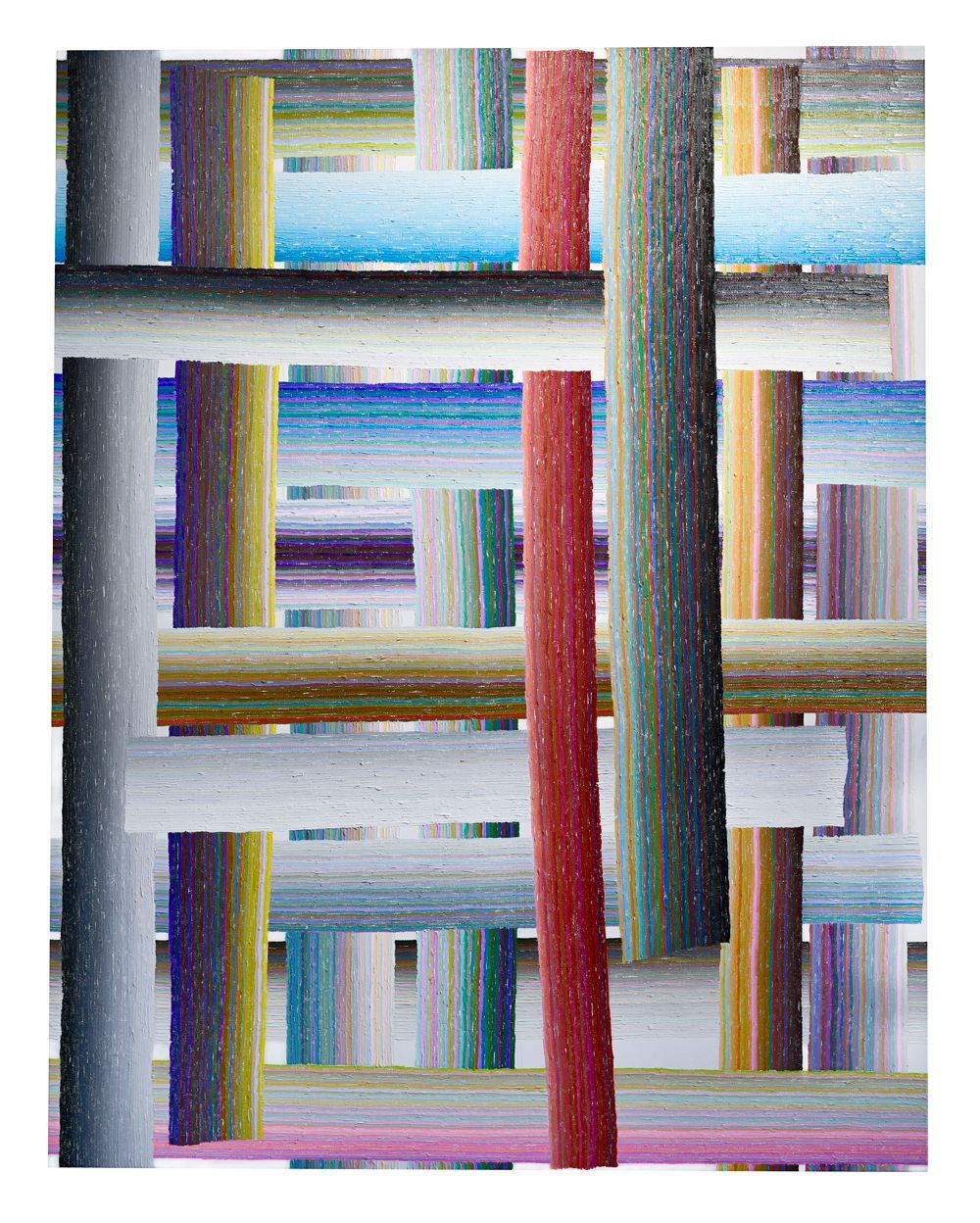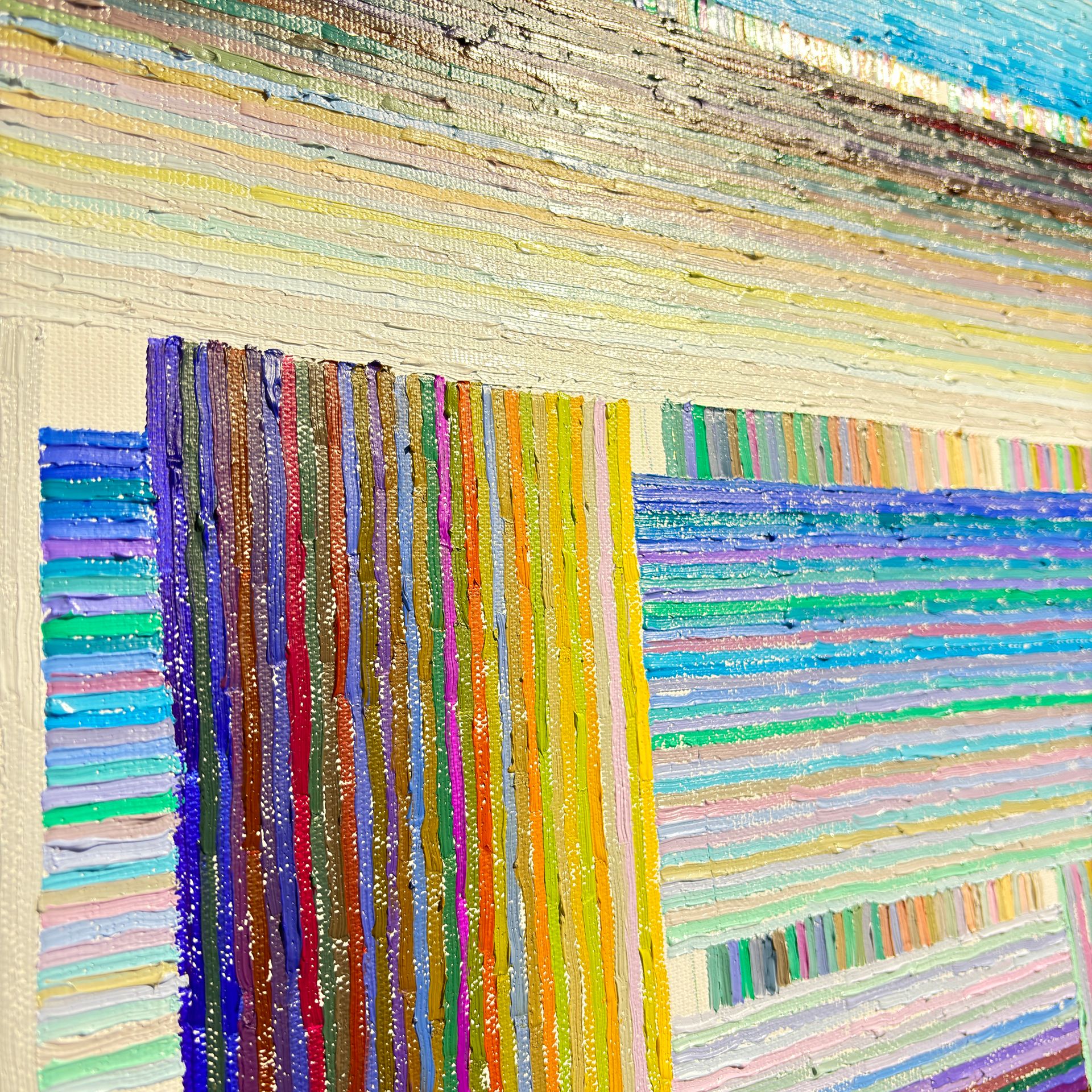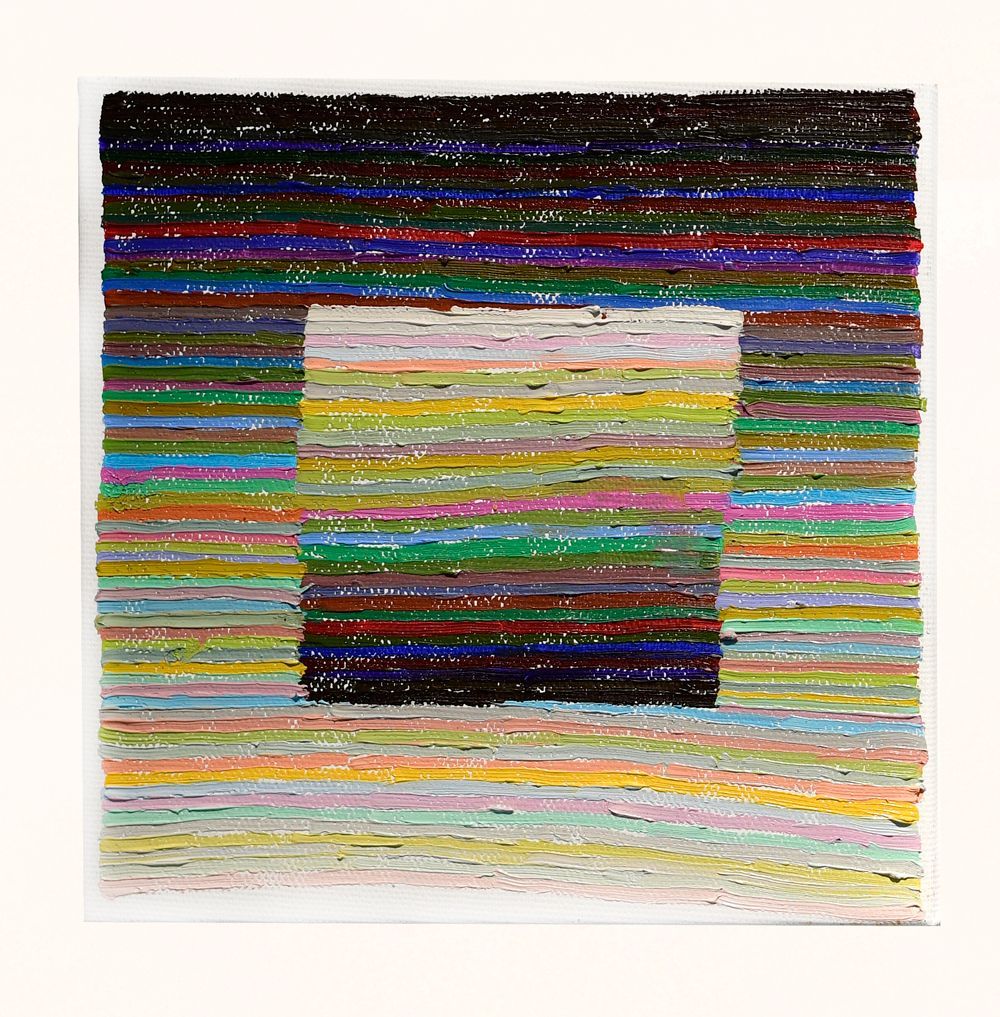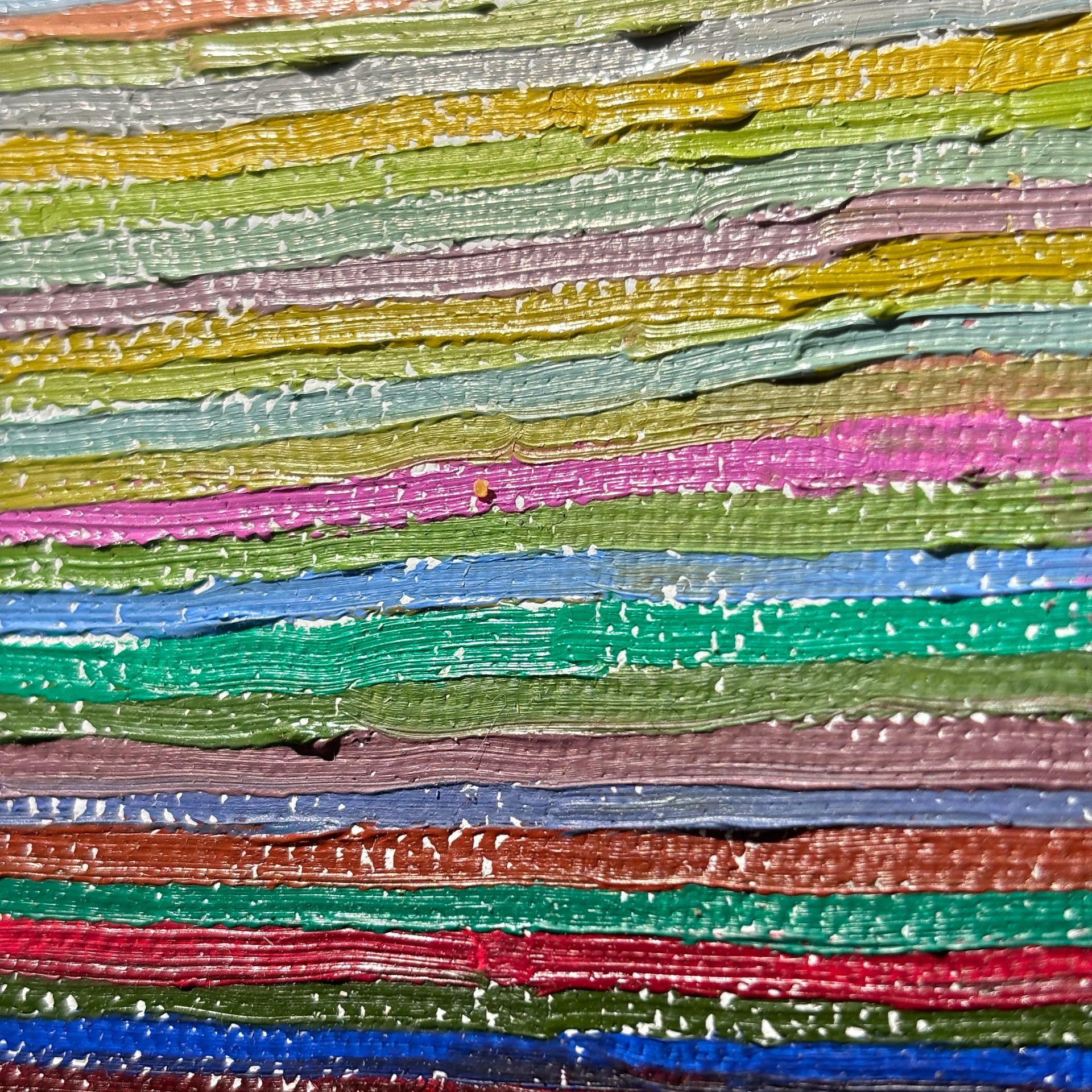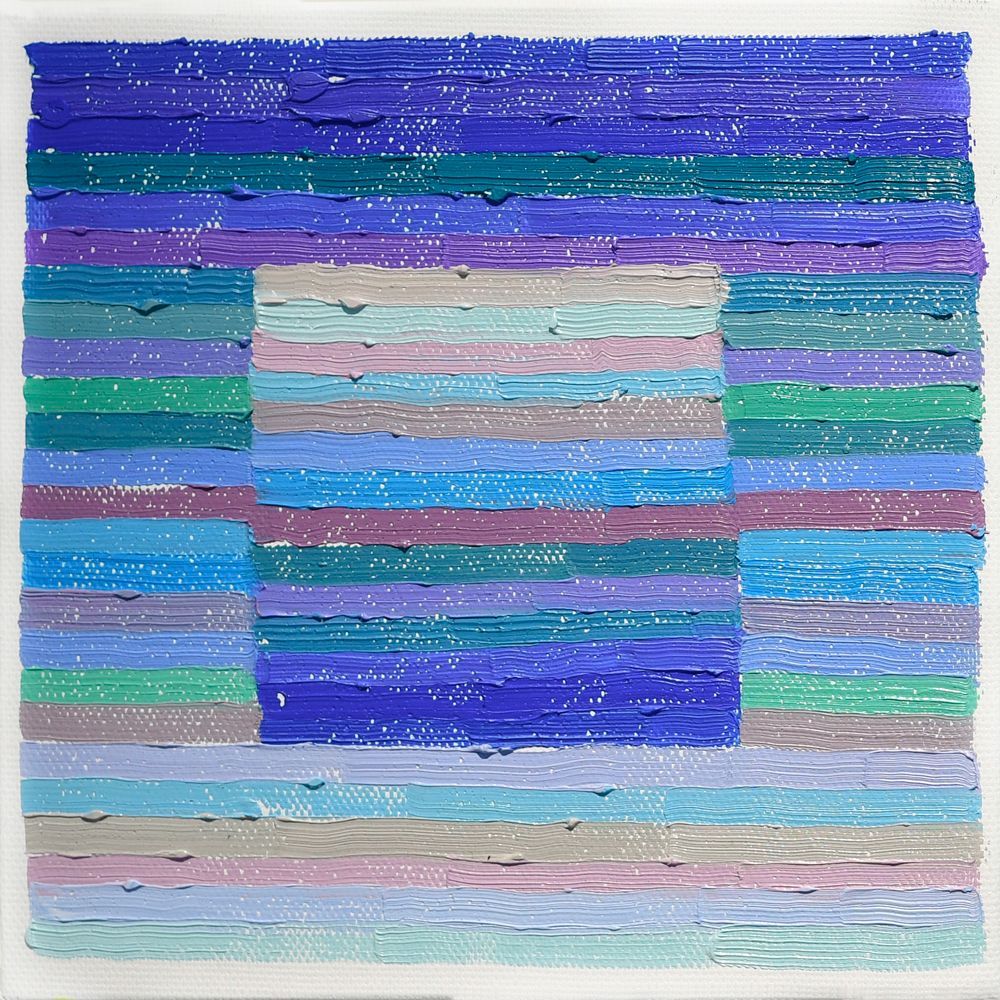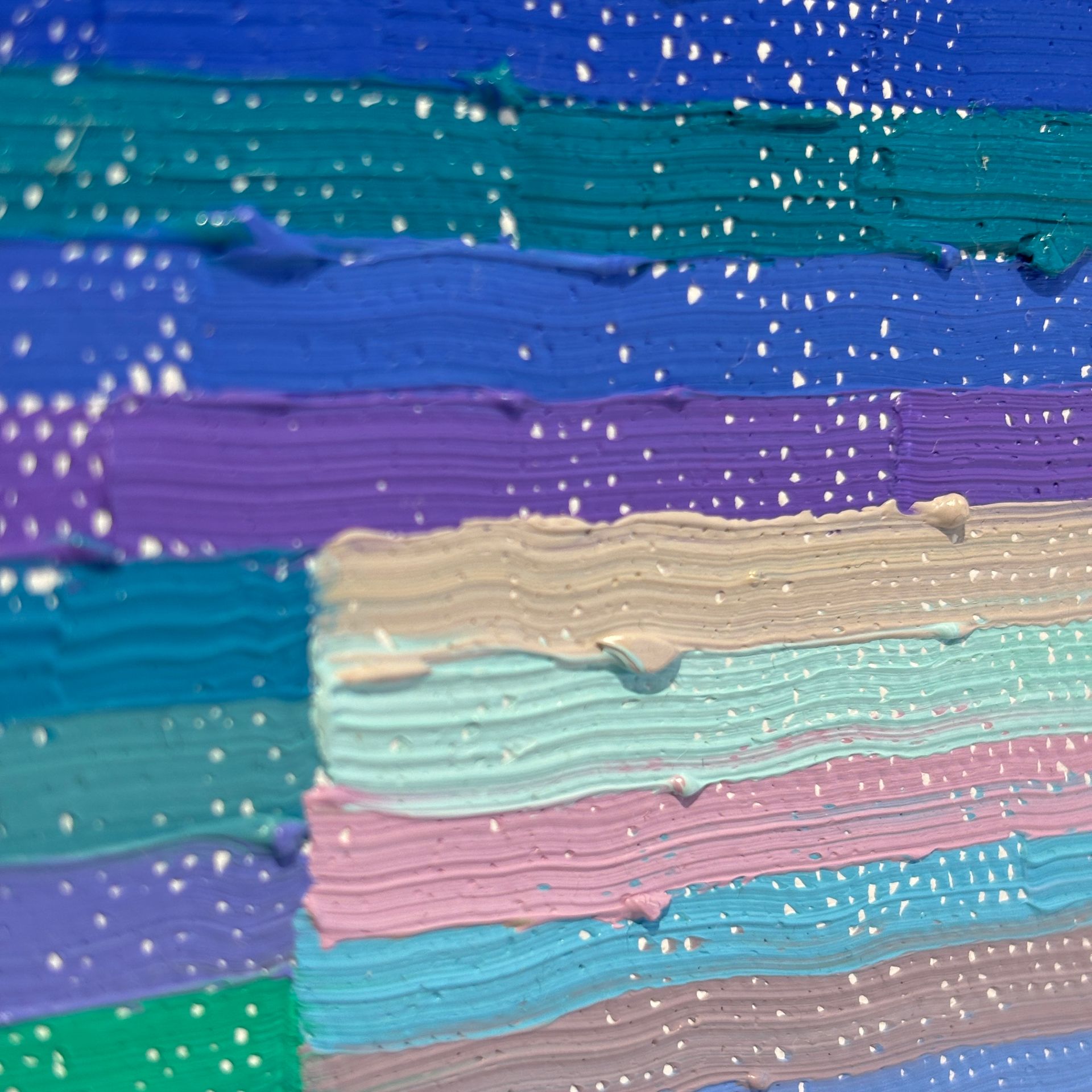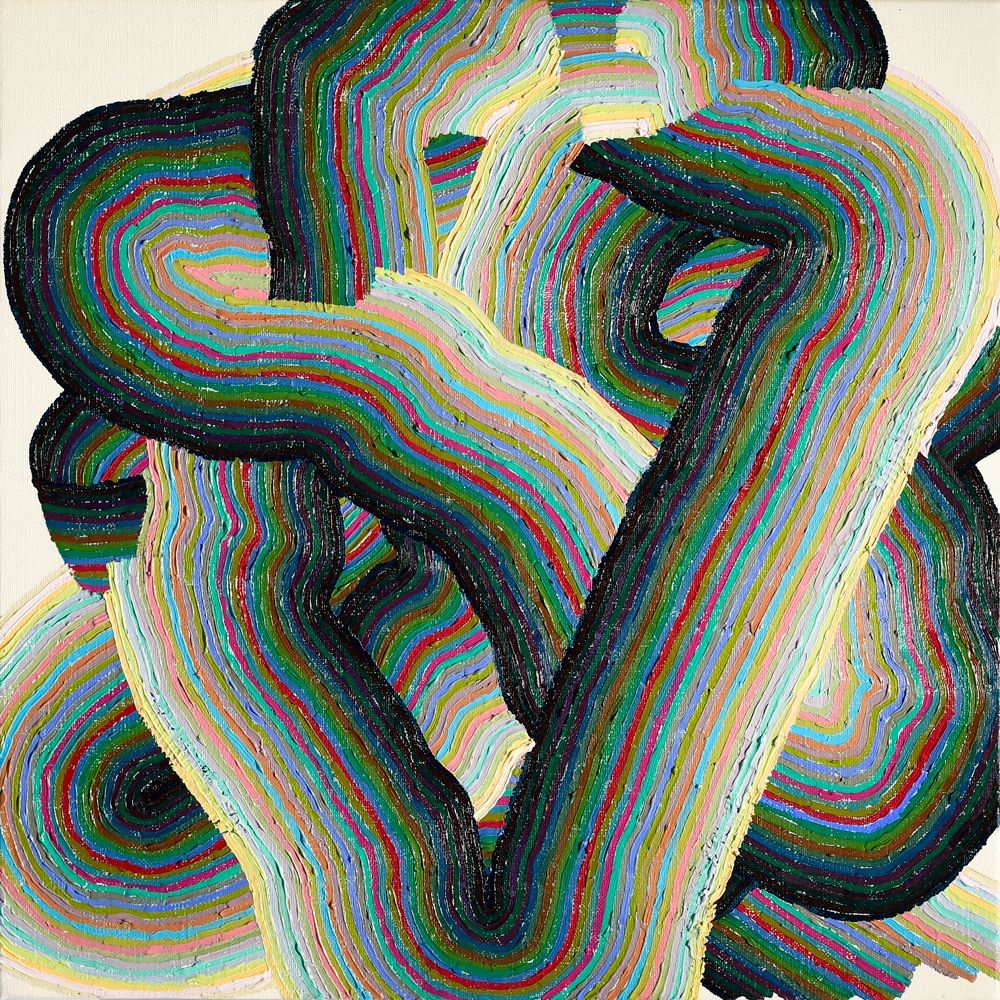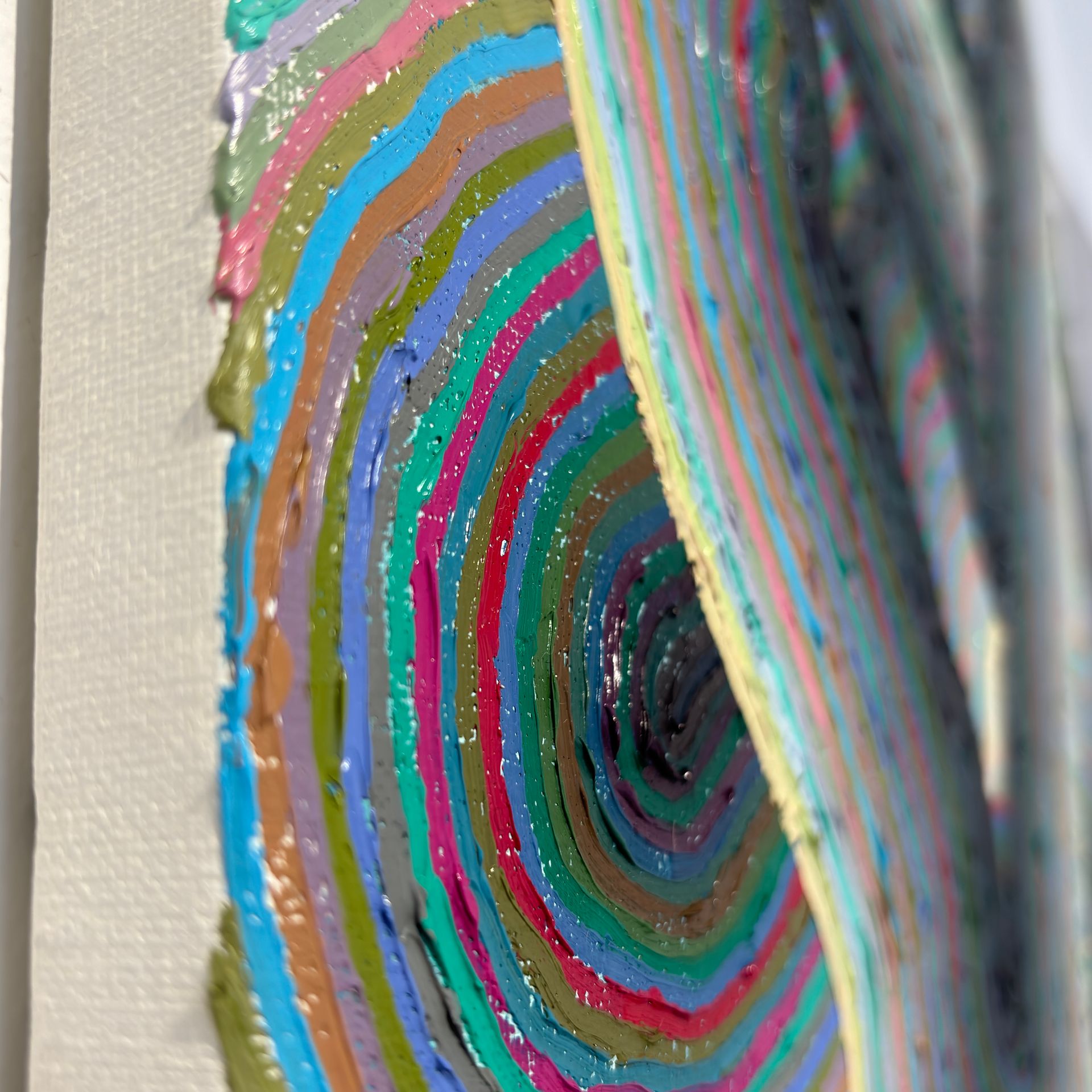Nanami Azuma
Born in 1997 in Chiba, Japan, Nanami Azuma grew up surrounded by creativity with her mother being active in the fashion world and her brother a web designer. Initially, Nanami got attracted by design studies, but her passion for drawing led her to study art. She graduated from Tama Art University in Tokyo in 2022 followed by a master’s degree in Oil Painting in 2024.
For Nanami, oil painting offers more freedom than traditional Japanese-style painting. While the slow-drying nature of oil can be a challenge, the medium carries tactile qualities, textures and pooling effects that are all essential in Nanami’s work.
Creating her paintings is a meticulous process that begins with drawing individual lines using a paintbrush. From these simple structures, she constructs intricate compositions where lines join to form shapes, and shapes interact to create space. Each line is carefully considered, and colours are selected in response to each other, layered to create depth and vibrancy. Repetition is central to her work, yet it is far from mechanical processing.
While her lines may follow predetermined rules, the randomness engendered by the texture of the support and the accumulation of paint create subtle distortions and irregularities, bringing spontaneity and rhythm to her paintings. These imperfections are integral to the work, likewise the repetitive, almost meditative nature of her creative process. The juxtaposition of the colours results in a visual effect of them appearing to mix. The painting is considered finished when the gradation and overall balance are achieved.
Nanami’s attraction to abstraction lies in forms that are not meant to imitate reality. For her, abstraction is like nature; no two elements are identical. Nanami’s art remains distinctive and original, even though she has been inspired by movements like Colour Field painting and Abstract Expressionism.
Her lines, whether straight or curved, thin or thick, are used to create complex compositions that feel both structured and organic.
Nanami’s artistic approach and acceptance of imperfections reflect the influence of Japanese artistic traditions. Her work combines global abstract traditions and personal expression, resulting in a visual language that is uniquely hers.
